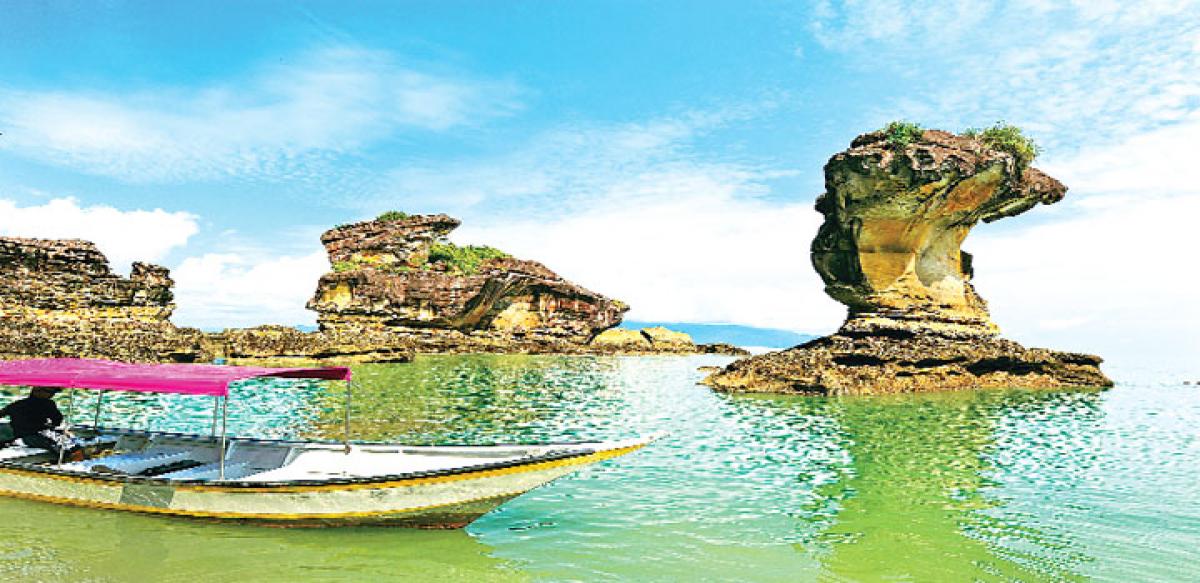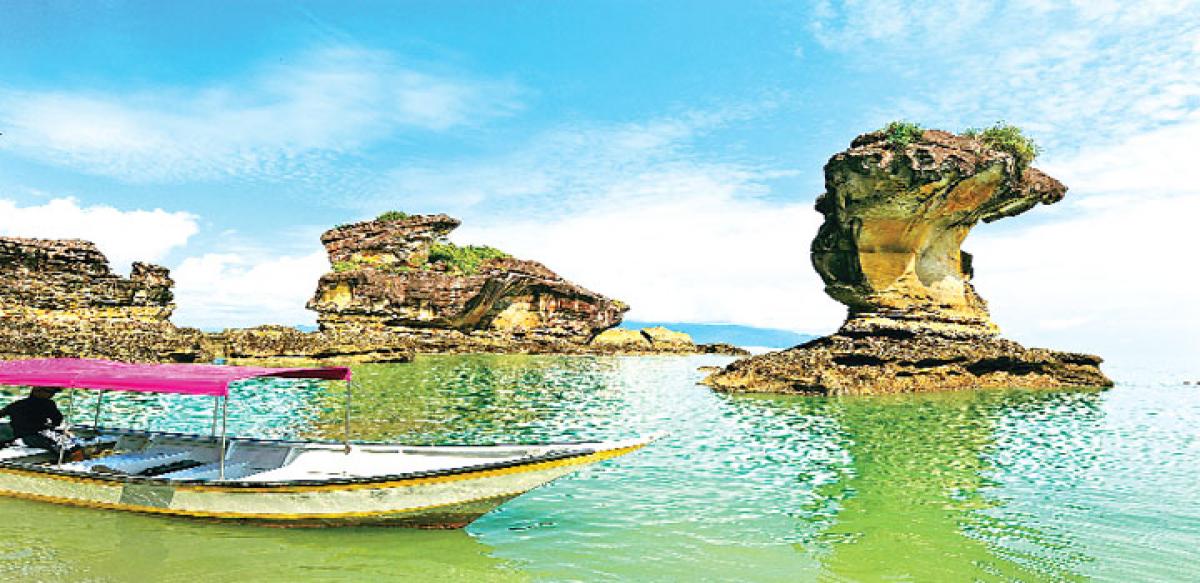Live
- Rachakonda sees uptick in murders, kidnappings; overall crime rate rises
- Hyderabad: Police bust drug racket, three land behind bars
- HC extends Sengar’s interim bail till Jan 20
- Foundation stone laid for drinking water pipeline
- Hyderabad: Fake tea powder unit busted, stocks worth Rs 1.2L seized
- Mastermind of kidnapping gang targeting celebrities arrested
- Khanapur: Temples celebrate their anniversaries grandly
- Ensure 100% enrolment of women into SHGs, urges Collector
- Resolve Prajavani petitions quickly: DC Venkatesh Dotre
- Record govt jobs provided in one and a half years says Narendra Modi
Just In

Sarawak is located in the stunning island of Borneo. It is known for its multicultural nature and its large indigenous tribal peoples with fascinating customs. It is also home to Gunung Gading National Park with its world-famous attraction, Rafflesia, the world\'s largest flower! The capital city of Sarawak State is Kuching, which by itself has much to lure the visitor.
Among the lesser-known charms of Malaysia, Sarawak is one of its most culturally rich regions. Malaysia's largest state, it is home to one of Asia's richest and most diverse ecosystems

Sarawak is located in the stunning island of Borneo. It is known for its multicultural nature and its large indigenous tribal peoples with fascinating customs. It is also home to Gunung Gading National Park with its world-famous attraction, Rafflesia, the world's largest flower! The capital city of Sarawak State is Kuching, which by itself has much to lure the visitor.
Here is a lowdown on a few of the best things to see and do in Sarawak:
Bako National Park: Barely an hour's drive from Kuching, followed by a boat ride – the only way to access the park – and we were in the area famed for its wide variety of vegetation and panoramic views. Bako National Park is home to mangrove swamps; rocky headlands; white-sand beaches; and a hinterland filled with kerangas bush; besides waterfalls and jungle streams. The biggest draw here is the endangered ‘proboscis monkey’. We also sighted lizards, snakes, long-tailed macaques, etc, besides several birds.
Semenggoh Nature Reserve: A hushed silence greeted us as we entered the wildlife centre, until a group of orangutans had been spotted and the guides and visitor groups watched fascinated. A hundred cameras clicked as one of the orangutans with her baby swung from tree to tree, slid down tree trunks, and fed on bananas; and even walked past us! The Semenggoh Nature Reserve is a place where orphaned or rescued orangutans have been protected and nurtured.
Sarawak Cultural Village: It is also called a Living Museum and has won a string of awards. Located on a 17-acre site which can be reached by a 45-minute drive from Kuching, the village showcases the art and culture of several ethnic groups. With its craft demos, taste of authentic local cuisine, captivating music and dance programmes, Sarawak Cultural Village offers an insight into a fascinating cultural mosaic.
Sarawak River Cruise: A popular tourist attraction in Kuching, it gives you an opportunity to see the city's main attractions. Sipping orange juice and munching on the layered cake offered to us soon after we were seated and serenaded by the cool evening breeze, we cruised past many landmarks like the State Assembly Building, Kuching Mosque, Fort Margherita, Astana, and could spot small Malay villages and plenty of fishing boats. A traditional Sarawak dance performance was the highlight of the tranquil evening.
Cat Museum: Kuching is also known as Cat City, given that its name means ‘cats’. This is said to be the only one of the two major museums in the world dedicated to cats (the other is in Japan). Here, here were figures of the animal in a range of materials like porcelain, wood, glass, ceramic, etc; and in every kind of shape, size and design you can imagine as also paintings and memorials.
Kuching Waterfront: This is a riverside walk and the perfect place to spend an evening what with its mix of facilities for entertainment, shopping, arts appreciation, or simply a leisurely walk down the promenade. It is a popular spot for family outings and meetings of friends. The rows of stores around here are a shopper's delight.
Fort Margherita: A well-known landmark, this fort dates back to 1879 and was built by the Rajah of Sarawak, Charles Brooke, and named after his wife Margaret. Designed liked an English castle, its stark white colour contrasts beautifully with the greenery all round. In fact, we were highly impressed by the profusion of gardens and rows of trees and plants alongside the roads, and it was not surprising to hear that Kuching is considered one of the greenest cities in this part of Asia.
Tua Pek Kong: This is Kuching's oldest Chinese temple. It is located opposite the Kuching Waterfront and overlooks a busy junction. We observed the profusion of characteristic red and gold Chinese lanterns, an ornate ceiling, vivid paintings, decorated interiors, and colourfully embellished doors and outer walls.
Gunung Mulu National Park: We regretted not being able to see this World Heritage Site and equatorial rainforest, located a short drive from Kuching. We were told that the park has massive cave systems, which house the world's largest chamber of its kind – the Sarwak Chamber. The Clearwater Cave is reckoned as the tenth longest cave in the world. Visitors flock to the park to see its famous limestone karst formations, which are both above the ground and underground. The Garden of Eden, a karst collapse, is said to be a stunningly beautiful sight.
There are many other attractions both within and outside Kuching including the Irrawaddy Dolphin Watching Cruise Tour, Islamic Museum, Chinese History Museum, Textile Museum, or even something for the more adventurous such as, boating, kayaking and trekking.

© 2024 Hyderabad Media House Limited/The Hans India. All rights reserved. Powered by hocalwire.com







